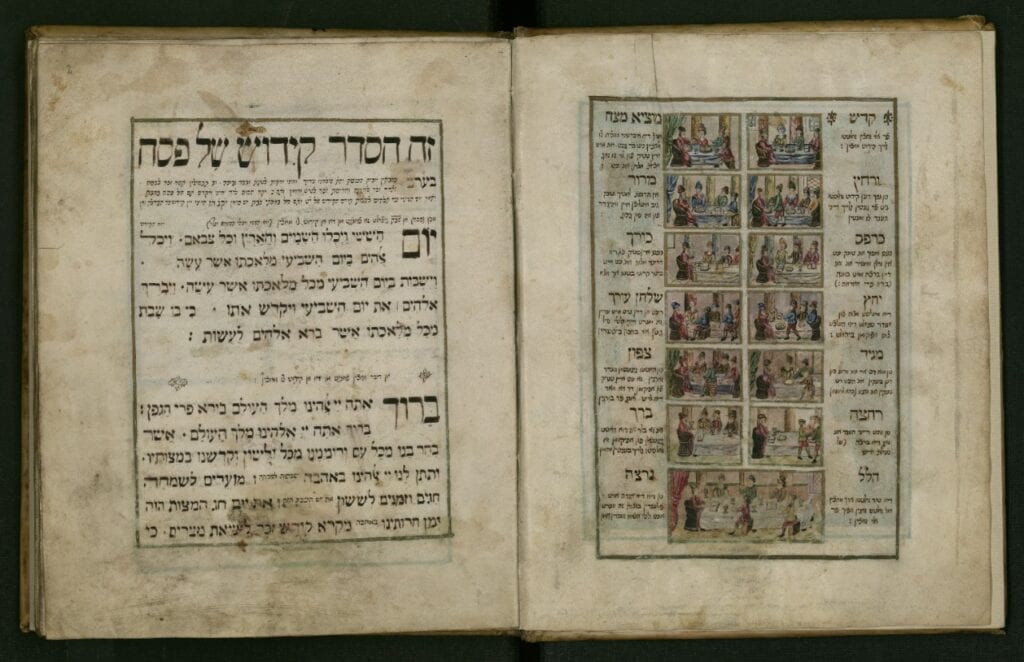In his day-to-day, Finkelman handles some of Judaism’s greatest cultural treasures, including a wide array of fascinating Haggadot.
“The liturgy for Passover is the single most commonly printed and published work in Jewish tradition, more than a prayer book, more than a Bible,” he stressed.
This is undoubtedly the case with one of the most prized Haggadot in the National Library’s collection, an extremely rare book printed in 1480 in Guadalajara, Spain, only 12 years before the expulsion of the Jews from the country.
The 1480 Haggadah is not only the oldest printed Passover text in the world but also a one-of-a-kind copy that was created only a few decades after the invention of the printing press.

This is the beginning of the transition from the Haggadah as a luxury item that a family might barely be able to afford, if at all … to something that could be mass-produced more cheaply,” Finkelman explained. “As you can see just by glancing at it, it’s a very simple layout. It’s the beginning of [printing] technology.”
On the other end of the aesthetic spectrum lies the Leipnik Darmstadt Haggadah, a lavishly illuminated manuscript from Germany that was written in 1733. Unlike its printed counterparts, such intricately crafted books were the purview of the wealthy.
The ornate manuscript is the handiwork of Joseph ben David of Leipnik, an influential 18th-century scribe-artist who produced an array of Haggadot for Jewish households.
Alongside the beautifully decorated handwritten Hebrew lettering are colorful illustrations depicting biblical scenes that Leipnik in fact copied from printed editions that were fashionable in Amsterdam at the time.
“A Haggadah of this kind is a luxury item that of course only the wealthiest members of the community could possibly afford,” said Finkelman. “This is much fancier, in color, on parchment and really meant for absolutely the highest echelons of society.”
The National Library is currently in the process of digitizing rare and out-of-print items such as these, in a bid to make them more accessible to the public. In fact, all of its most valuable Haggadot are available for online viewing u visokoj rezoluciji.
“The National Library of Israel has a policy and an aspiration to open access as much as possible because we believe that these belong to everyone,” Dr. Raquel Ukeles, head of collections at the library, told The Media Line. “These are great human treasures.”
Nevertheless, she added, “no matter how much digitization we do there is still no substitute to coming face-to-face with a rare treasure.”
Ljubaznošću od TheMediaLine.org
ŠTA UZIMATI IZ OVOG ČLANKA:
- This is undoubtedly the case with one of the most prized Haggadot in the National Library's collection, an extremely rare book printed in 1480 in Guadalajara, Spain, only 12 years before the expulsion of the Jews from the country.
- This is the beginning of the transition from the Haggadah as a luxury item that a family might barely be able to afford, if at all … to something that could be mass-produced more cheaply,” Finkelman explained.
- The 1480 Haggadah is not only the oldest printed Passover text in the world but also a one-of-a-kind copy that was created only a few decades after the invention of the printing press.






















